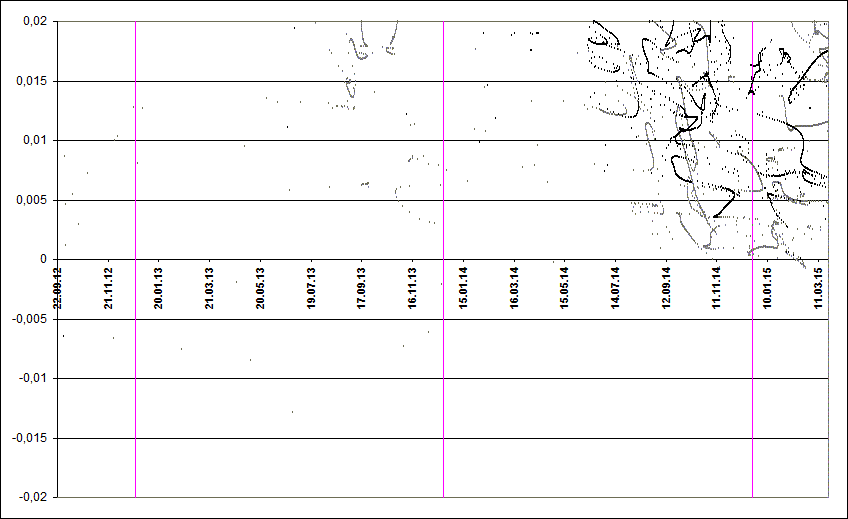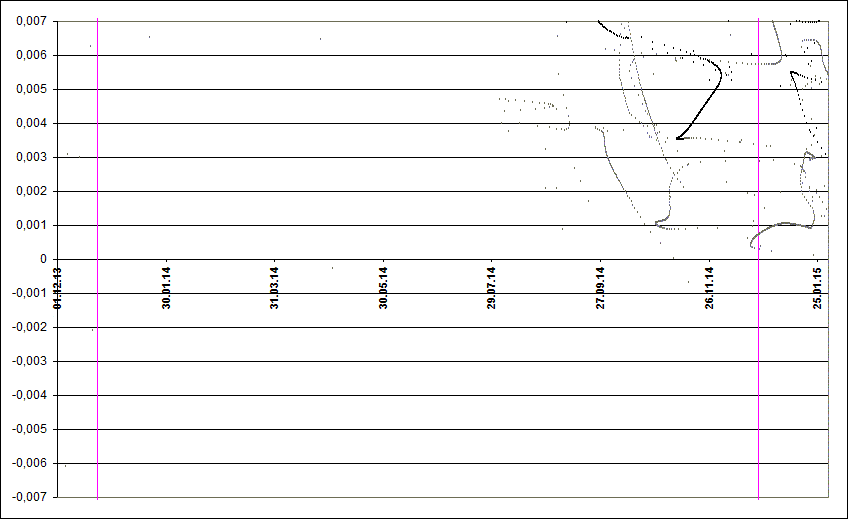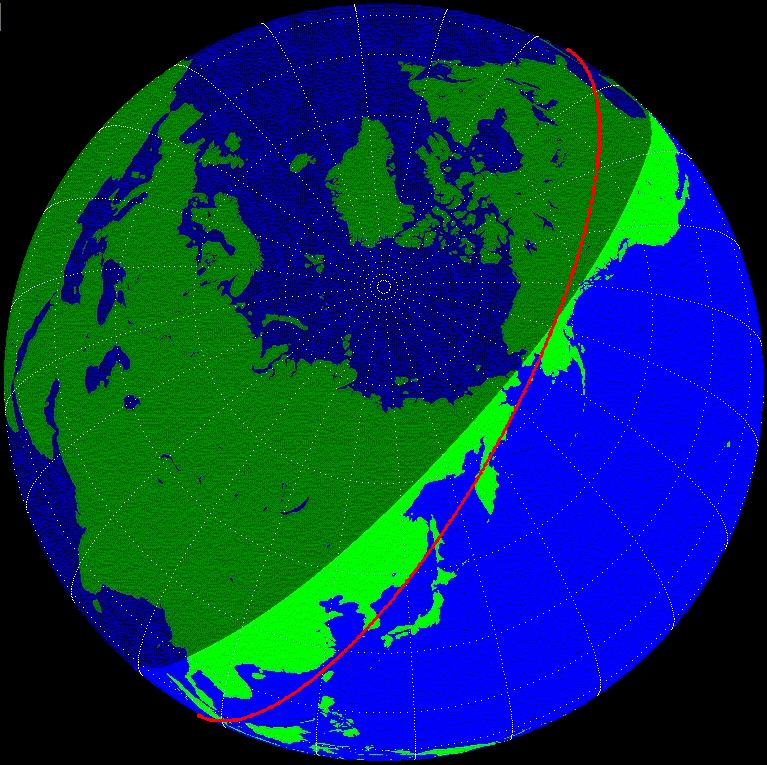Ursids 2014: prediction of activity
to the list of predictions

Fig. 1. Space-temporal projection of 6P-ids trails parts onto their minimal distance passages dirung the period (correspondence between colours of the particles and their ejection velocities can be seen here).

Fig. 2. Detailed space-temporal projection of Ursids trails parts onto their minimal distance passages in 2014 (correspondence between colours of the particles and their ejection velocities can be seen here).
In 2011 the Earth passes close to the 1405 trail. The encounter parameters are the following: minimum distance 0.00069 AU, ejection velocity 22.87 m/s, trail density - 117.2% of a 1 rev Leonid trail dencity, date and time of maximim - December 22, 23:54 UT.
Despite high age of the considered trail, its encountering part remains regular and quite dense. High ejection velocity is a negative factor, it means that this part of trail consisits mainly of tiny particles, producing weak meteors. However, we can expect a notable Ursids activity increase around the given time with ZHR of 10-15 in addition to the background activity.
This encounter was earlier pointed out by Esko Lyytinen, his results are listed in [4]. They are close to those obtained by the Author. By Lyytinen's computations, minimum distance to 1405 trail is 0.0007 AU, maximum time is December 22, 23:38 UT, estimation of ZHR from the trail is 10.

Fig. 3. The Earth as seen from coming Ursid meteors (RA=219.3°, Dec=+75.8°) during the expected maximum time of outburst from 1117 trail at 17:48 UT 22 December.
This outburst, if happens in expected time, will be visible from almost all Eurasia, excluding only its easters edge, from islands of Arctic Ocean, from norht-eastern part of Northern America and from northern edge of Africa. This should allow a wide observing coverage for this outburst. An additional favorable factor is absence of the Moon. Its age at the time of maximum will be less than a day, so it will set soon after the Sun.
References
1. "Comet's dust 2.0" program by S. Shanov and S. Dubrovsky. [Used for orbital computations.]
2. Lyytinen E, van Flandern T. "Predicting the strength of Leonid outbursts", 2000, Icarus, P. 158-160.
3. Jenniskens P. Meteor showers and their parent comets, 2006, 780 p. 4. Kasuo Kinoshita, http://jcometobs.web.fc2.com/ [Orbital elements of the comet 8P Tuttle]
5. Hewgill G. Xearth 1.1.0 (Software program), 2003.
References
1. "Comet's dust 2.0" program by S. Shanov and S. Dubrovsky. [Used for orbital computations.]
2. Lyytinen E, van Flandern T. "Predicting the strength of Leonid outbursts", 2000, Icarus, P. 158-160.
3. Jenniskens P. Meteor showers and their parent comets, 2006, 780 p. 4. Kasuo Kinoshita, http://jcometobs.web.fc2.com/ [Orbital elements of the comet 8P Tuttle]
5. Hewgill G. Xearth 1.1.0 (Software program), 2003.